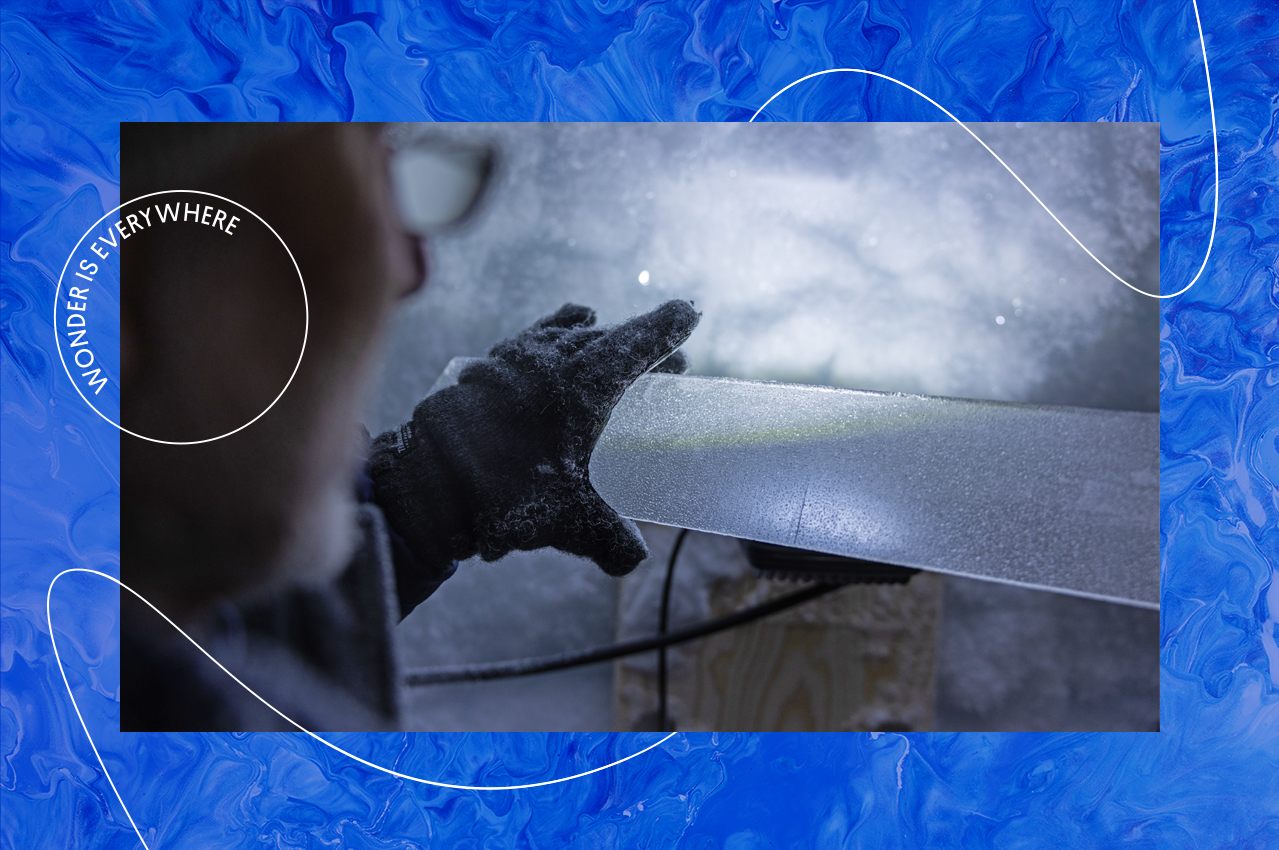Wonder Is Everywhere: The New Tornado Alley, the Coolest Library in the World, and More From Around the Web
Get a peek into what we’re obsessed with right now.
Wonder is everywhere. That’s why, every other week, Atlas Obscura drags you down some of the rabbit holes we encounter as we search for our unusual stories. We highlight surprising finds, great writing, and inspiring stories from some of our favorite publications.

The Coolest Library on Earth
by Elizabeth Landau, Hakai Magazine
A windowless yellow-tiled warehouse in an industrial park on the outskirts of Copenhagen is home to 40,000 hunks of ice—frozen treasures that preserve millions of years of climate history. For ice core “librarian” Jørgen Peder Steffensen, who oversees the chilly archive, the cores are a time machine. “All those annual layers of snowfall are just in one undisturbed sequence back in time,” Steffensen tells Hakai Magazine. “The deeper you go, the farther back in time you go.”
Restoring This Rare Medieval Ship Means Putting 2,500 Pieces Back Together
by William Booth, Washington Post
In 2002, a 500-plus-year-old merchant ship was discovered in the mud of the River Usk in Wales. Finally, after two decades of excavation and preservation, an archaeologist is ready to rebuild the three-masted ship, one piece at a time—if he can find a museum to house it.
How “Tornado Alley” Is Changing
by Zaria Gorvett, BBC Future
When two meteorologists coined the term “Tornado Alley” in the 1950s, it did not have precise boundaries, but over the years, it became synonymous with the Great Plains, which has for decades experienced the majority of the same 1,200 tornadoes that occur in the United States each year. Now scientists say the danger zone is moving to the southeast, with more tornadoes occurring in Alabama, Tennessee, and Kentucky.
Tracking “Pedro, the Wyoming Pygmy Mummy”
by Jake Nichols, Cowboy State Daily
In 1934 (maybe) two gold prospectors (maybe) discovered the mummified remains of a 17-inch-tall man (maybe) in a cave in the Pedro Mountains, about 55 miles southwest of Casper, Wyoming. For almost a century, people have debated the authenticity of the find—alternately considered an archaeological treasure, a sideshow hoax, and a cursed object. “This account will at least attempt to clear up misconceptions, point out exaggerations and lies, and maybe reach a commonsensical conclusion,” writes Jake Nichols. “Though, be warned, the end is as perplexing as the beginning.”

These Ancient Flutes Mimic the Sound of Prehistoric Birds
by Jennifer Nalewicki, LiveScience
Among 1,100 bird bones unearthed in Israel’s Hula Valley, scientists discovered seven with finger holes and mouthpieces—tiny musical instruments designed to mimic the calls of the kestrel and the sparrowhawk. To study the 12,000-year-old artifacts, they created digital replicas. “”It was very moving when I played it for the first time and heard the sound that Natufians made 12,000 years ago,” says one.
There Are 18,000 Unopened Boxes in the Canadian National Archives
by Maria Woolf, Globe and Mail
It looks like “the vast storage house at the end of one of the Indiana Jones films,” a Canadian official says of 14,936 unopened boxes containing private archives and 2,949 boxes of government archives in the Library and Archives Canada collections. Some of those boxes have been waiting for someone to peek inside for more than 50 years.

Unlocking the Mysteries of a Lonely South Dakota Monument
by Paul Hammel, Nebraska Examiner
A group of students from Wayne State College in Nebraska traveled to Lemmon, South Dakota, as part of a complicated quest to determine what—if anything—is hidden inside a monument to Hugh Glass, a 19th-century trapper who was mauled by a bear hundreds of miles from the nearest settlement, and lived to tell the tale. He was immortalized in an epic poem by John Neihardt (and much later, by Leonard DiCaprio in The Revenant), who erected the monument 100 years ago and claimed to have placed an “original manuscript” inside.
It’s Snowing Again Atop Mount Washington
by Associated Press
The staff of the Mount Washington Observatory, 6,288 feet above sea level in New Hampshire’s White Mountains, is accustomed to extreme weather. But they’ve never seen this much snow in June. As of last week, the mountain had seen 8.4 inches of white stuff in the month—the most since record keeping began almost a century ago—with more in the summer forecast.





























































Follow us on Twitter to get the latest on the world's hidden wonders.
Like us on Facebook to get the latest on the world's hidden wonders.
Follow us on Twitter Like us on Facebook